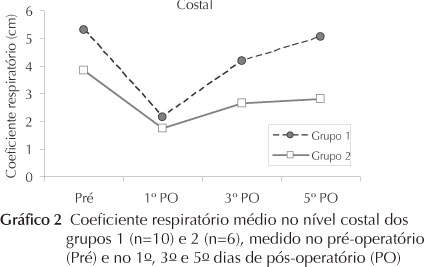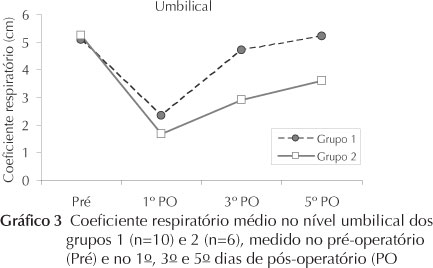Upper abdominal surgery is associated to increased risk of pulmonary complications, which may be lessened by judicious use of therapeutic maneuvers aimed at lung expansion. The purpose here was to compare two respiratory incentive techniques on recovery of thoracic-abdominal dynamics in patients having undergone upper abdominal surgery. Sixteen patients in such condition were randomly divided into group 1 (n=10), who did respiratory training with the Voldyne device, and group 2 (n=6), submitted to a split-inspiration pattern training. Chest wall expansion was rated by measuring thorax circumferences before surgery and on the 1st, 3rd, and 5th post-operative (PO) days. In both groups a significant decrease was found in circumference values on the 1st PO day, which gradually recovered, until on the 5th PO day no significant differences were found as compared to pre-operative measures. Group 1 showed significantly better thoracic-abdominal expansion rates than group 2's, as well as higher recovery time rates all through. Though both breathing techniques used were effective, inspiratory incentive using the Voldyne device showed better results in recovering chest mobility after upper abdominal surgery.
Breathing exercises; Postoperative care; Physical therapy modalities





